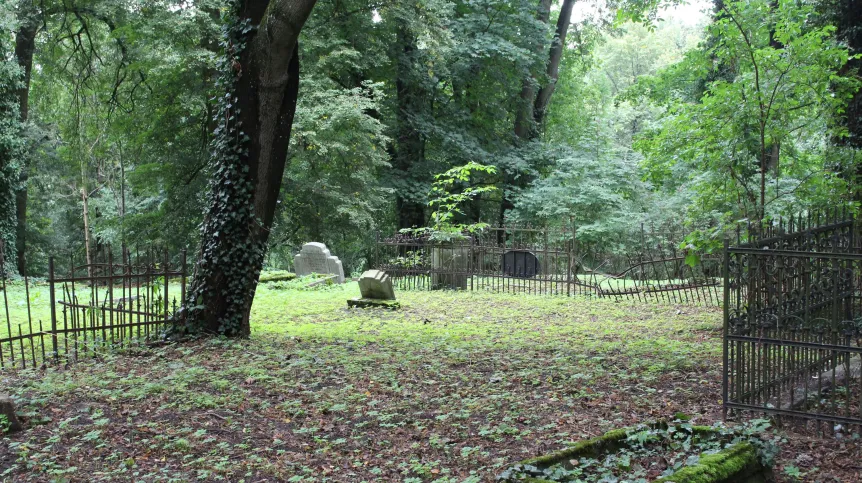
The cemeteries of former East Prussia reflect the prevailing beliefs and fashions in society, and show various fascinations and world views, say scientists from Poland and Germany who have been conducting a research project in the area since 2020.
'For many cemeteries, this is the last moment to explore them,’ says the project leader, Professor Magdalena Kardach from the Adam Mickiewicz University in Poznań.
Since 2020, family cemeteries of East Prussia have been studied by a team of nine Polish and German scientists representing various fields of science: literary studies, archaeology, history, art history, landscape architecture, phytosociology. Scientists have already visited over 1.1 thousand cemeteries from the 19th and 20th centuries, located in the immediate vicinity of estates.
'We reach many such places guided not by the sight of graves, which are often no longer there, but by the vegetation, our clues include ivy and periwinkle,’ says Professor Kardach. She adds that scientists reach many of the studied cemeteries literally at the last minute, because the graves are often collapsed, overgrown, and disappear from the landscape.
'Our research takes into account family cemeteries in their reconstructed relationships with other elements of the cultural landscape - combined with the spatial organization of estates and villages, parish cemeteries, churches, communication routes and other significant anthropogenic elements of the original area, Kardach says.
She adds that the research results show that the planning and spatial arrangement of family cemeteries were a sign of belonging to an elite class (nobility) with certain social aspirations, which paid tribute to their own collective origin myths.
'In this sense, East Prussian cemeteries were cultural products and gave the cultural landscape of their age a specific character; they constituted an important part of this landscape with symbolism depending on the dynamics of cultural changes, fashions and views,’ she says.
Kardach admits that cemeteries reflect the fascinations prevailing in society, from romantic to historicist interpretive patterns, to individual examples of the final national-socialist notes of the Third Reich. An example of a site containing symbols of National Socialism is the zu Dohna-Lauck family cemetery in Markowo near Morąg, where one of the gravestones bears a swastika symbol and a quotation of Adolf Hitler's words.
The researchers describe, photograph and then culturally interpret each of the visited cemeteries. Books documenting this work will be published.
The team will continue working until the end of 2024.
The research project 'Ideological dimensions of the cultural landscape. The semantics of the family cemeteries of East Prussia in the light of literary and nonliterary sources from the 19th to the middle of the 20th century' is financed by the Polish National Science Centre in Kraków. (PAP)
Author: Joanna Kiewisz-Wojciechowska
jwo/ pat/ kap/
tr. RL













